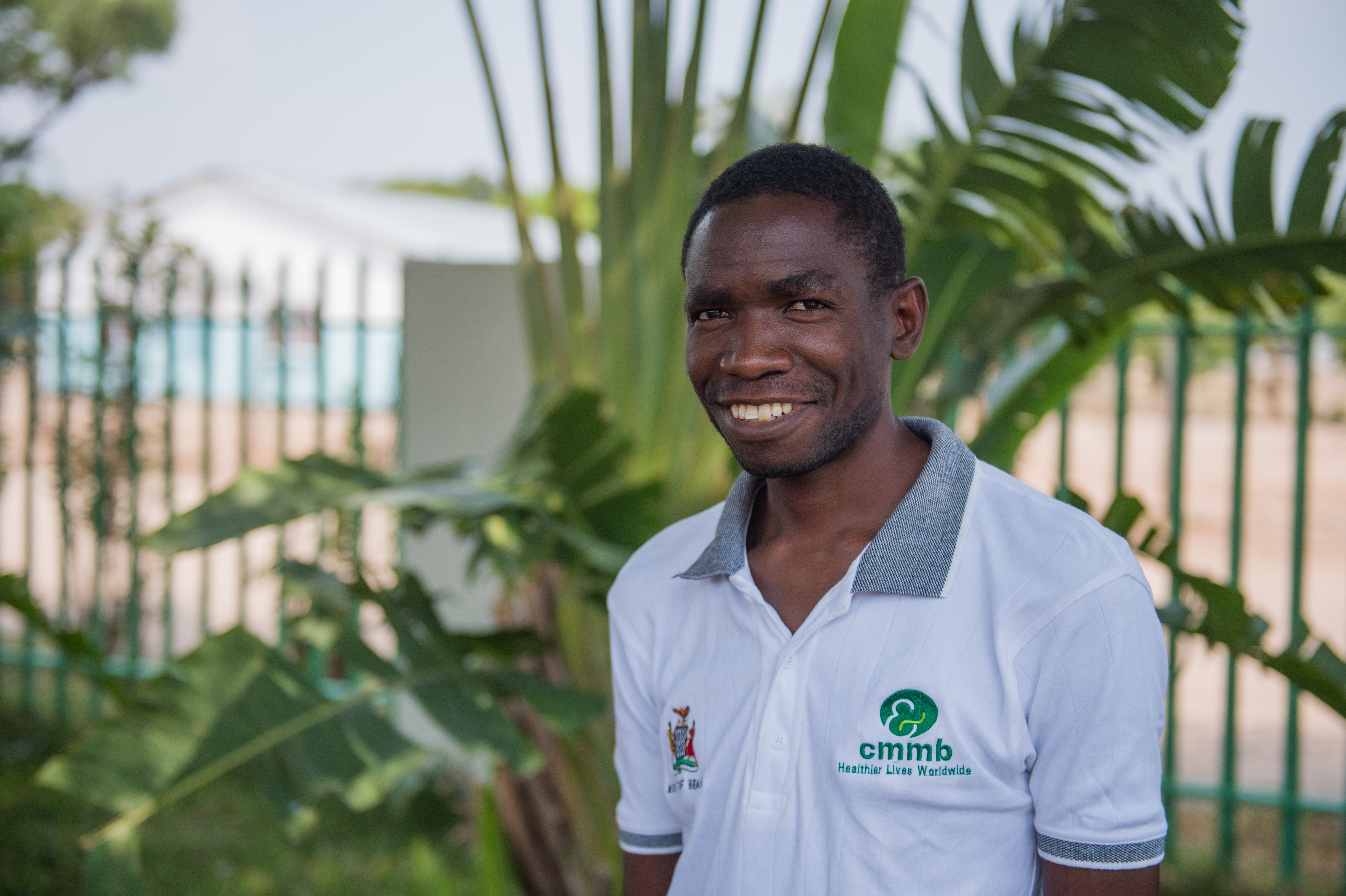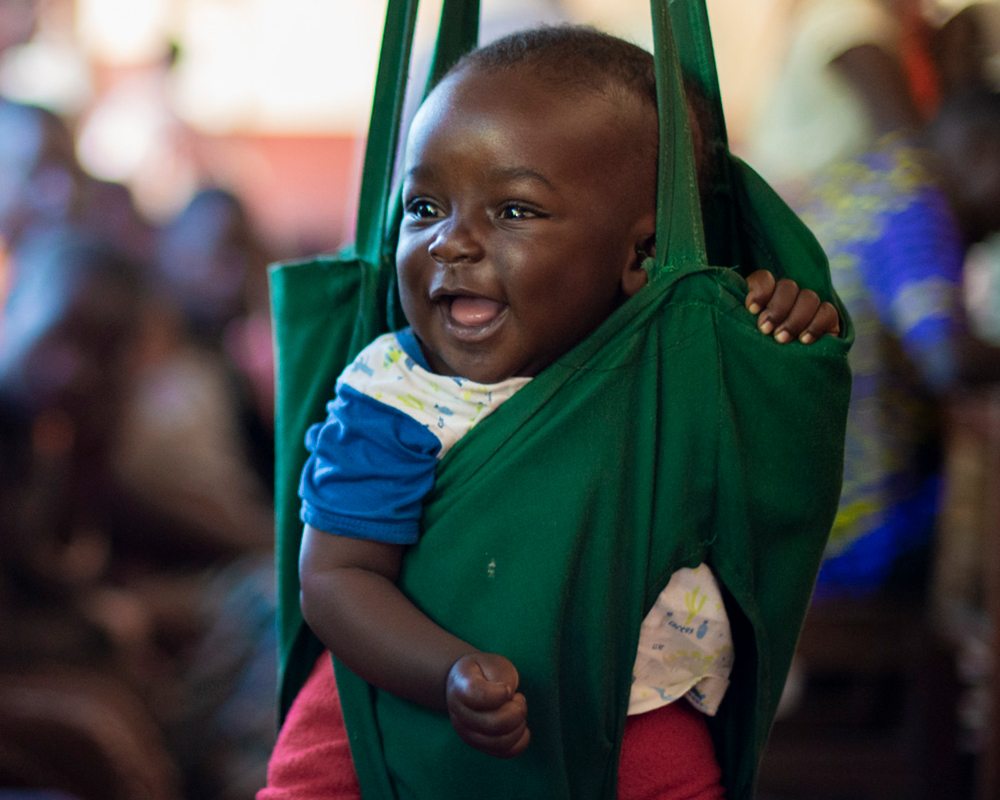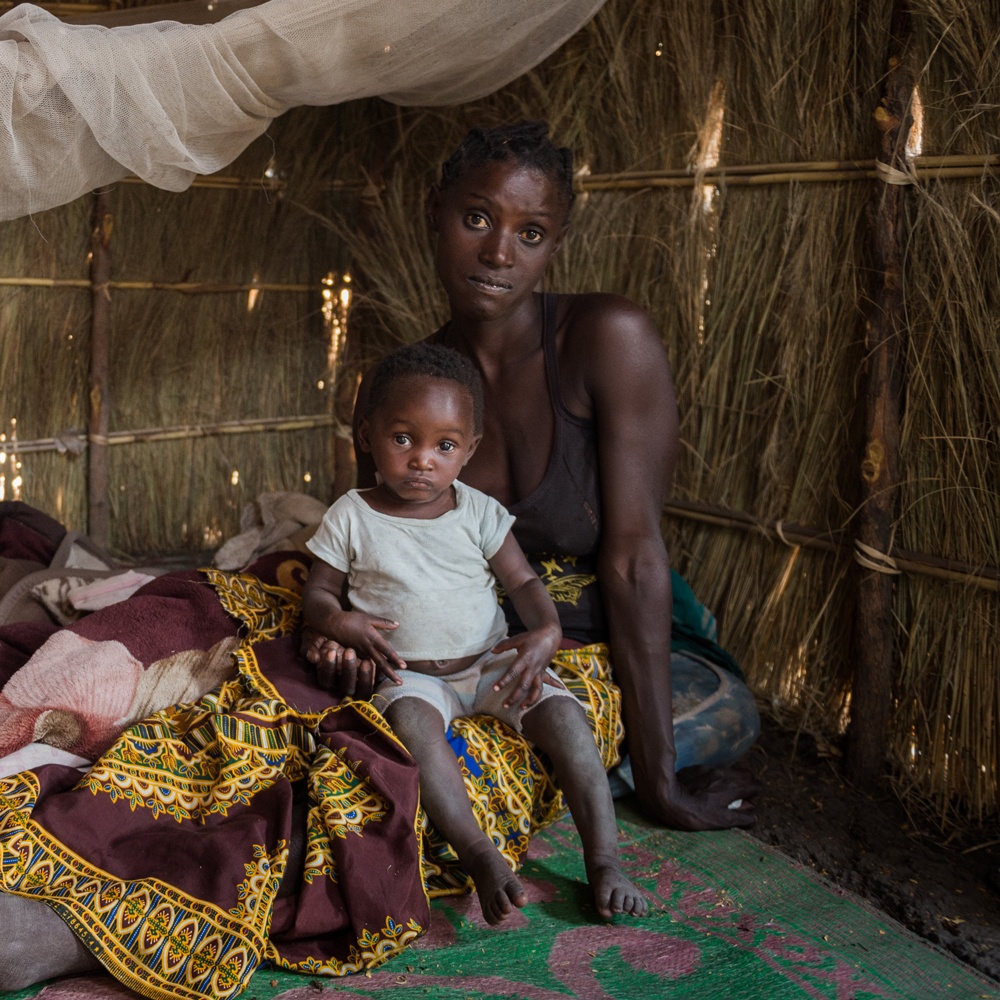Update from Mwandi: Malaria Spikes, COVID-19 Vaccine Roll-out and Preventing Malnutrition

We recently caught up* with our colleague, Mwauluka in Zambia. As the manager of the CHAMPS program in Mwandi, he shared with us about how COVID-19 is affecting programming, the reason behind a recent spike in malaria cases, and more.
*Discussion occurred October 29th, 2021
COVID-19 in Rural Zambia
How is the COVID-19 situation in Mwandi at the moment?
In June, July and August, the COVID numbers were slightly up, but we have seen the numbers going down since the beginning of September. The COVID positivity rate is below 10%, but those cases are very mild, and people don’t even realize they have it. It’s not really scary now in Mwandi, and people are almost getting back to normal ways of greeting. However, I know that sometimes when the weather gets a bit cold, this can escalate cases.
In terms of vaccination delivery, we have also seen improvement, we thought around 500 doses would take maybe two months to finish, but we managed to give out 500 doses within just a week. So, people are willing to get vaccinated compared to the previous days, which is a big step.
Have you noticed a change in attitudes towards COVID-19 since 2020?
There is a major difference. We lost a number of people that we know in that first wave, so people really became scared. After we observed some COVID-19 cases within the health facility and had some losses, people became skeptical about coming to the facilities.
I remember interacting with a number of pregnant women here at Mwandi Mission Hospital who didn’t want to attend antenatal care because they believed they would get COVID-19 in the facility. It was hard to get them to Mwandi Mission Hospital and the clinics because of this. Now, we are seeing a slight increase of people willing to go to the clinics, where children under five-years-old are screened for malnutrition. We’ve also seen a rise in the use of antenatal care services.
How are you tackling these COVID-related issues?
We have since intensified our communications with the community regarding COVID-19. We are part of the committee that has been instituted in the district as a rescue communications committee to spearhead vaccinations and get people to adhere to the measures. This committee also encourages people to go to facilities and access the services provided there. They are well protected from COVID-19, and they also have routine checkups.
Thanks to these efforts, we are getting a number of people vaccinated, and people are flocking to the facility demanding the vaccine. I think the only challenge we may have is the accessibility of the vaccines themselves.

A child with Plumpy’Nut, a peanut-based nutritional supplement used to treat severe acute malnutrition, in Mwandi.
Treating Malnutrition in Mwandi
In Mwandi, I understand that the nutrition levels of children change based on the rainy and dry season and what is growing. What is the malnutrition situation at the moment?
There has been a slight improvement in the rates of severe malnutrition from last year to this year. This time last year, we had around a 1.7% rate of severe malnutrition. As of this year, we are somewhere around 0.3%.
Why do you think that is?
In terms of nutrition, we were slightly lucky this year due to a number of factors. We are fortunate that last year we received the rains. Mwandi is not an area that always has rainfall, but last year, we received a little bit of rainfall, which improved the crop yield in most communities. We may see the numbers of malnutrition cases rising as we get into leaner months around December, and we don’t know how much of the rains we will receive.
Have you seen other positive outcomes of your malnutrition interventions?
We used to have a number of children relapsing after rehabilitation at Mwandi Mission Hospital. They would come back maybe three times a year. This year, relapses have completely reduced because children are identified early through growth monitoring at the community level.
We owe this improvement to the training of the community health workers and decentralization to the community level. Community workers are now adequately trained to use the anthropomorphic measurements and record it, without the presence of a healthcare worker. After a child is identified as at risk of malnourishment, they are put on the Plumpy’Nut treatment. So, most cases are dealt with at the community level, then Mwandi Mission Hospital treats any severe malnutrition cases.
We still have severely malnourished children, but the number is going down. We appreciate the efforts of community workers in various communities—they ensure that children who are underweight are quickly identified and put on Plumpy’Nut.
It’s great to hear that the adjustment of the strategy to the community level has made such a difference. Have any other changes in service delivery been effective?
We also supplemented the nutrient foodstuff. So, we now also have soy meals and peanut butter to give rehabilitated children before they go home. This has bridged the gap between rehabilitation at Mwandi Mission Hospital and the children’s transition to the family foods, which are sometimes inadequate and lack sufficient nutrients.
While we are on the topic of nutrition, have you made progress with the mother-to-mother support groups?
We moved a step ahead with the formation of the mother-to-mother support group. They meet every month and provide peer-to-peer mentorship on how best to feed their under-five children. For the mothers with underweight children, it’s an opportunity to learn from others. It’s beneficial that the mothers live in the same community because it allows for comparison. If Child A is doing better than Child B in the same setting, the mothers can assess why. They can ask, what do you do that I don’t do?
Wow, so these groups are progressing well?
Some of the groups have managed to create gardens. The vegetables they grow are then used as an ingredient in the porridge that they make for their children. It is very important that the mothers enrich the porridge using resources they’ve managed to produce on their own. If they grow a lot, they sell the excess and buy more ingredients to enhance the nutritional value of their children’s porridge.
Malaria on the Rise
Malaria is in part responsible for Zambia’s high maternal and neonatal mortality rates. What has been Mwandi’s experience of tackling malaria this past year?
This year, we have had a big problem with malaria. While the very rainy season was better for crop production, on the other side, it gave us many problems with malaria. This year, we have recorded the highest number of malaria cases in under-five children. Also, the number of adults with malaria went beyond any record in the last five years. The district actually ran out of anti-malarial drugs. At that point, we had to act to ensure that we were continually reducing malaria cases.
The community health workers were overwhelmed with the cases—to the point where they would call to report cases without test kits; they just identified cases of malaria based on the patient’s complaints and physical presentations of malaria. After the cases increased a lot, and by the time we provided the test kits, we would find that nearly everyone in a household had malaria.
Do you and the team have the resources to change this trend as we approach the rainy season this year?
No, we need to start focusing on prevention—and not waiting for the problem and then finding the cure. One preventative strategy is spraying the mosquito breeding areas—rather than just spraying the houses. This tactic ensures that we actually reduce the number of mosquitos that are going to breed there. We need integrated interventions. We actually need quite a number of them. Otherwise, we will have more problems this year.
What is the reason for this resource problem?
We have an issue with the availability of resources as a country. I wouldn’t really say that we are taking resources away from malaria prevention to something else, but there are so many priorities. The country thinks that maybe just doing a little bit to prevent malaria will help, but it’s not really working. We just don’t have enough to really meet the needs of communities in all corners of the country.
I had a very good discussion about malaria with the Director of Health in Mwandi. Next week, we have another meeting to think about how we can engage the ministry and see if there’s a way to increase Mwandi’s funding. But it’s not likely because the country is currently overwhelmed.
Thank you for this update on issues and successes in Mwandi!



